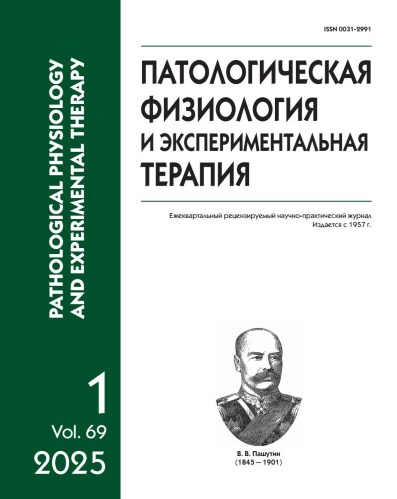Aberrant methylation and expression of protein-coding genes of the demethylation system and long non-coding RNA genes in clear cell renal cell carcinoma
Abstract
Background. Epigenetic changes play a key role in tumor emergence and progression. Specifically, multiple studies have unequivocally reported the involvement in oncogenesis of abnormal DNA methylation in the promoter CpG islands of a number of protein-coding genes, miRNA genes, and long non-coding RNA (lncRNA) genes. Abnormal DNA methylation can result in the inhibition of the transcription of suppressor genes that normally protect cells from malignant transformation. One cause for the abnormal DNA methylation may be disordered functioning of the TET family dioxygenase genes. Objective. The aim of this study was investigaing the role of changes in the levels of methylation and expression of TET1, TET2 protein-coding genes and ADAMTS9-AS2, SNHG6, GAS5 lncRNA genes in the pathogenesis of clear cell renal cell carcinoma (ccRCC).
Methods. Paired samples of surgical material (tumor/adjacent histologically normal tissue) from 47 patients diagnosed with ccRCC were used in the study. The samples were collected and clinically characterized at the Research Institute of Clinical Oncology of the Blokhin National Medical Research Center of Oncology. Methylation levels were analyzed by quantitative methyl-specific real-time PCR. The expression level was assessed by reverse transcription reaction followed by cDNA amplification using SYBR Green real-time PCR. Significance of differences between the studied groups was analyzed with the non-parametric Mann–Whitney test for independent samples. The effect of gene methylation on their expression and the co-expression and co-methylation of protein-coding genes and lncRNA genes were analyzed using the Spearman's correlation coefficient. All statistical analyses were performed using the IBM SPSS Statistics 29 software. Differences were considered significant at p≤0.05.
Results. For the first time, this study showed a significant increase in the methylation levels of TET1, ADAMTS9-AS2, SNHG6, and GAS5 genes in tumor tissue from ccRCC patients compared to normal tissue. Also, the TET1, ADAMTS9-AS2, SNHG6, and GAS5 genes demonstrated significant decreases in their expression level in tumor samples, while the TET2 gene expression level was increased in tumor tissue. Significant correlations of the methylation status of TET1, ADAMTS9-AS2, SNHG6, GAS5 genes with the disease stage and the presence of lymph node metastases were found, and TET1, ADAMTS9-AS2, and SNHG6 methylation correlated with the primary tumor size. In addition, the expression level of the ADAMTS9-AS2 gene was significantly decreased in advanced (III-IV) stages of the disease, and the expression level of the SNHG6 gene with an increase in tumor size. A statistically significant negative correlation was observed between changes in the methylation status of promoter CpG islands of the ADAMTS9-AS2, SNHG6, GAS5 genes and changes in their expression level. A significant correlation was found between the methylation levels of promoter regions in three pairs of "lncRNA-protein-coding” genes (ADAMTS9-AS2 / SNHG6 – TET1, GAS5 – TET2) and between expression levels in two pairs of "lncRNA-mRNA" genes (GAS5 – TET1, SNHG6 – TET2).
Conclusion. The study demonstrated the involvement of aberrant methylation in the emergence and progression of clear cell renal cell carcinoma, and also suggested the applicability of the identified patterns in the prognosis and diagnosis of this disease.






